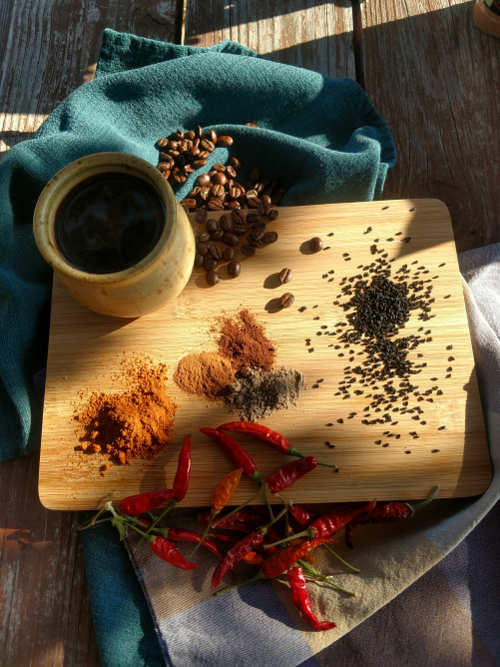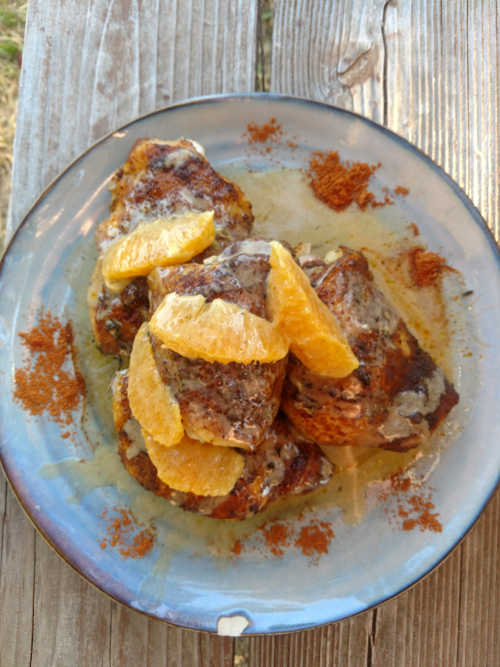
Each drop of rain that falls to Earth has been recycled untold times. There is no new water under the sun; the atmospheric waters that swirl throughout our planet are ancient.
Perhaps the rain that last fell, the water that gathered in fields and drained into soil filling our wells, held drops from the Nile or from Lake Tana on an Ethiopian plateau.
If so, we’ve shared life-giving liquid with our brethren from “the land of origins” in the Horn of Africa, otherwise known as Ethiopia.
As denizens of this brilliant jewel called Earth, we dine at a common table, beneficiaries of the nourishment that our planet provides. Food is the perpetual tie that deliciously binds, bringing us closer to the rest of our human family.
I invite you to join me in an armchair adventure to a land of beginnings and mysteries, a place where hands reach to a common platter to eat, where feeding one another is a sign of love and deep respect.
Ethiopia, a large country with twice the terrain of France, sits in the middle of the Horn of Africa. The Horn juts from the east side of the continent into the Arabian Sea, separated by the Gulf of Aden from the Arabian Peninsula to the north.
A land-locked country, Ethiopia is surrounded by six countries. Going clockwise from the noon position are Eritrea, Djibouti, Somalia, Kenya, South Sudan and Sudan.
Though once plagued by famine, Ethiopia’s economy has grown in recent years. It sits 6th among the 54 countries of Africa when ranked by gross domestic product.
Ethiopia is called the land of origins for good reason. The eastern part of Africa, and most specifically Ethiopia, is dubbed the cradle of civilization; it is believed that the human species originated there, eventually migrating to other parts of the world.
The earliest fossils of recognizable modern humans, homo sapiens, were found in the Omo Valley, which lies in the southwest part of the country.
Another (perhaps less significant) item has its origins in Ethiopia: coffee, which is a key culinary component there.
Coffee is considered Ethiopia’s national drink and its enjoyment is ingrained in Ethiopian culture. Coffee is drunk throughout the day, and rarely alone.
“Buna teta,” which means “come drink coffee,” is an invitation to partake of elaborate coffee ceremonies which can sometimes take hours.
Ethiopians also consume coffee as food; green coffee beans cooked in butter are a popular snack.
It is said that the discovery of this robust bean was made by a ninth century Ethiopian goat-herder named Kaldi. He noticed energizing effects when his flock nibbled on the red berries of what is now known as a coffee bush.
Arabica is considered the superior of the two coffee species widely cultivated throughout the world today (with Robusta being the other), and an amazing 5,046 documented varieties of this species have been found in the ecosystems of Ethiopia’s forested mountains.
Suffice it to say that despite the name, Arabica is not native to Arabia, but to Ethiopia.
On the high central plateaus that make up most of Ethiopia, an indigenous cereal called teff grows, first cultivated by the Ethiopians some 3,000 years ago.
The tiny, sandy-colored seeds of this plant are ground for flour to make injera, a spongy, fermented flatbread which is the staple food of Ethiopia.
To create the unique texture of injera, the dough needs a full three days (or “three moons”) to ferment. (If it’s your first batch, it will require a starter, which takes an additional four days.)
Much of Ethiopian food is in the form of deeply spiced stews, and for injera to properly soak up their beautiful liquids, it must have many holes in its spongy surface. Getting it just right is an important skill.
Injera is cooked on a large, round griddle called a mitad, and the spiraling technique takes many years to master.
In much the same way that creating a proper batter and the cooking method are perfected arts, the complex process of rolling injera in stew to catch the flavorful liquid takes years of practice. The procedure requires a deft hand and is often referred to as “dancing with fingers.”
While many Ethiopian stews are made with meat – beef, lamb, goat, or chicken – there are a variety of vegetarian stews made with things such as lentils, split peas, and chickpeas.
Vegetarian dishes of all types abound, in fact, due to Christian and Muslim practices of abstaining from meat at various times of the year.
Spicy red lentil stew, for example, is a staple dish in Ethiopia, as are collard greens.
A trio of aromatics – onions, garlic and ginger – are commonly used to flavor stews and vegetables, as are a variety of richly appetizing and often piquant spice blends.
Perhaps the most quintessential of these blends is berbere, which is used in many (if not most) Ethiopian dishes. This complex mix of spices is based on dried chilis and includes a plethora of other spices, many with sweet notes.
An internet search will yield recipes for making a simplified version of berbere; however, it’s possible to order authentic berbere online.
The berbere in my pantry includes more than a dozen spices: paprika, coriander, cayenne, cardamom, allspice, ginger, garlic, turmeric, black pepper, cumin, salt, cloves, fenugreek, cinnamon and nutmeg.
The amount of heat from the chilis varies from mixture to mixture and home to home, with many versions in play.
Ground nigella seeds are also a common flavoring, adding a smoky, earthy essence to foods, not unlike a milder, sweeter version of powdered truffle.
Spiced clarified butter is a key ingredient in many dishes, and smoked milk made with the smoke of olive twigs adds a unique flavor component to some foods. (An Ethiopian version of scalloped potatoes is made with smoked milk.)
A variety of beverages are made in homes throughout Ethiopia, including tej, a fermented honey wine, abesh wuha, a water flavored with fenugreek, and perhaps the most unusual, helemur, a tea-like drink made from roasted dough.
Spris is a refreshing, colorful drink made with thick layers of blended fruit. One version includes avocado, mango, and papaya pureed separately and stacked within a glass. A squeeze of lime on top completes the concoction.
Ethiopia is considered one of the safest countries in Africa; violence there, including against travelers, is relatively rare.
Hospitality is important to Ethiopians (entertaining friends in one’s home is frequently enjoyed), so it’s no surprise that a recent travel site poll named Ethiopia the most welcoming country in Africa.
Since food is served on communal platters and diners eat using their hands, hand washing ceremonies are performed both prior to eating and just afterward. The eldest member of the group begins the meal by taking the first handful of food.
Ethiopia is a country that is rumored to have the Ark of the Covenant secretly housed within its borders, is one of just two in Africa that have never been colonized by Europeans, and one whose 20th century emperor sparked a religion. (Rastafarians believe Haile Selassie is a Messiah.)
These facts are strangely fascinating; however, in my opinion one of the most charming components of life in Ethiopia is the custom known as gursha, where a guest at table is honored by being hand-fed a morsel of food wrapped in injera as an act of respect. The person receiving gursha then returns the favor.
Perhaps we can start such a trend here.
The recipe for today is my take on chicken in a sauce made of tej with oranges and is inspired by Yohanis Gebreyesus in his book, Ethiopia: Recipes and Traditions from the Horn of Africa.
A small investment in a packet of berbere spice blend is well worth the taste of this dish.
Tej, fermented honey wine, is difficult to find outside of Ethiopia, but thankfully dry white wine with added honey can be substituted.
The combination of flavors in the sauce danced on my tongue, at once spicy, sweet and earthy. I hope you enjoy it as much as I did.

Chicken in Tej sauce with oranges
4 chicken thighs, bone in and skin on
1 tablespoon olive or other oil, plus more for greasing pan
½ - 1 tablespoon berbere spice blend
Salt and pepper
1 or 2 medium carrots
1 or 2 medium stalks celery
2 yellow onions
Handful fresh thyme
Handful fresh Italian parsley
1 cup tej or medium-dry white wine with 1 tablespoon honey added
¼ cup heavy cream
1 tablespoon cornstarch
2 medium oranges
Preheat oven to 400 degrees.
Grease a large cast iron skillet or other roasting pan.
Place chicken thighs in skillet. Rub them with oil and sprinkle berbere spice blend evenly over them, then season with salt and pepper.
Roughly chop carrot(s), celery stalk(s), and onions. Place around chicken thighs in pan.
Add thyme and parsley to pan.
Cover pan with aluminum foil and cook in oven for about 30 minutes.
Remove aluminum foil and continue cooking until chicken registers 165 degrees and the skin is golden brown and crispy, about 20 to 40 minutes longer. (This will vary depending on the size of the chicken thighs.)
If it looks like the vegetables are in danger of burning, add a bit of water.
While chicken is cooking, peel oranges with knife, removing all the white pith. Remove segments by cutting between each membrane. Reserve the juice from the process by working over a bowl.
Whisk the honey into the wine and set aside for sauce.
When chicken is ready, remove from pan to a plate and cover with foil to rest.
Place warm skillet or roasting pan on stovetop and turn to medium heat.
Add wine to pan and deglaze pan, scraping up any bits of vegetable with a large spoon or spatula.
Allow wine to simmer and reduce for a few minutes.
Add cream and allow to lightly simmer briefly for warming and further reduction.
Whisk cornstarch into ¼ cup water and stir into sauce.
Taste and add an additional pinch of berbere spice blend to taste if desired.
Turn off heat and strain sauce with a fine sieve.
Mix in oranges and reserved juice.
Serve chicken drizzled with sauce and oranges.
Esther Oertel is a writer and passionate home cook from a family of chefs. She grew up in a restaurant, where she began creating recipes from a young age. She’s taught culinary classes in a variety of venues in Lake County and previously wrote “The Veggie Girl” column for Lake County News. Most recently she’s taught culinary classes at Sur La Table in Santa Rosa, Calif. She lives in Middletown, Calif.

 How to resolve AdBlock issue?
How to resolve AdBlock issue? 



